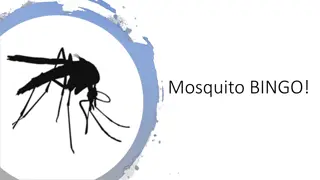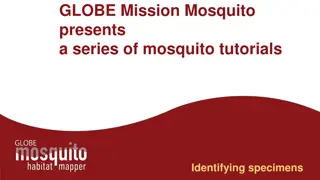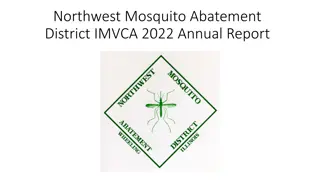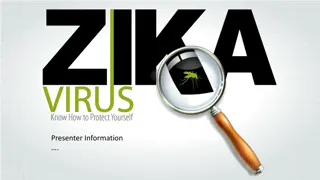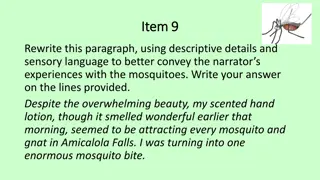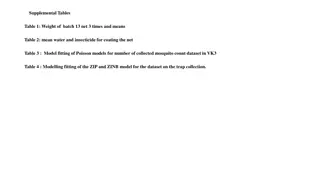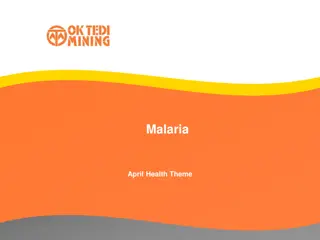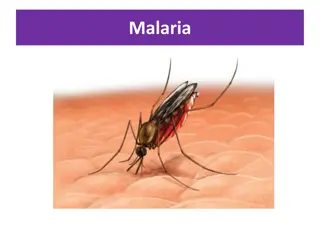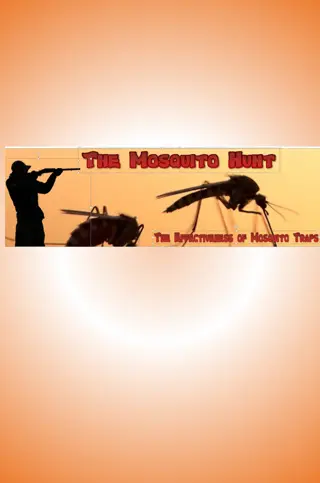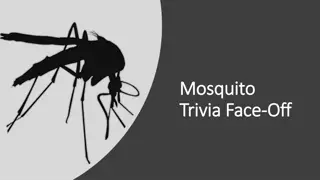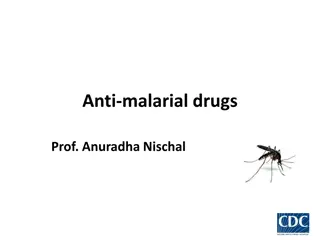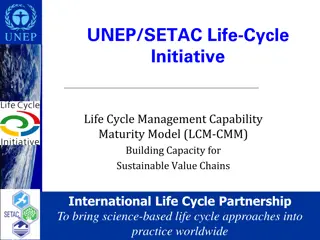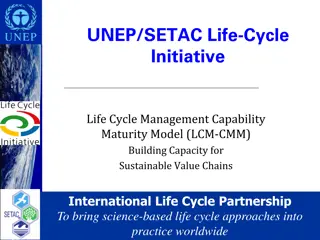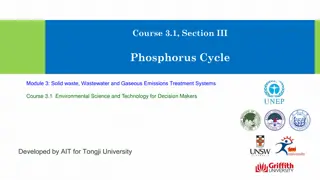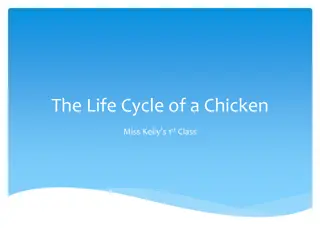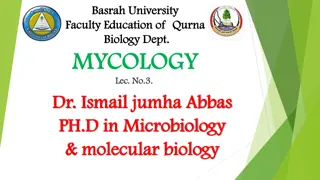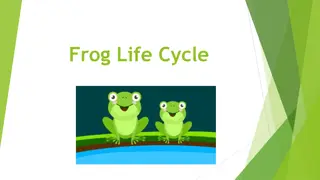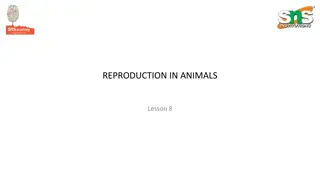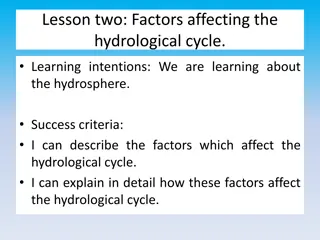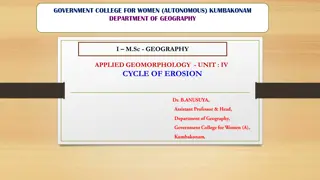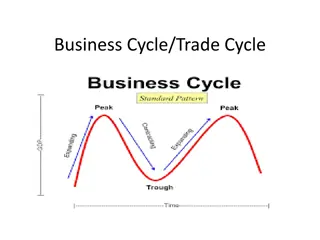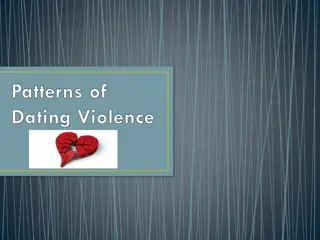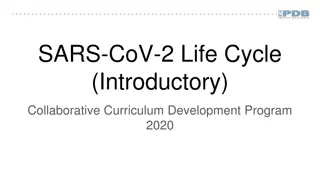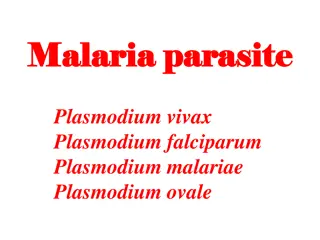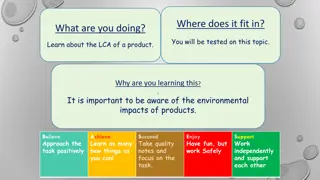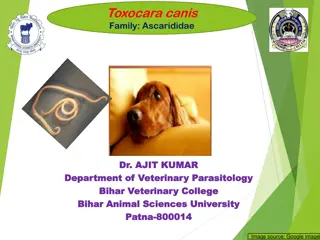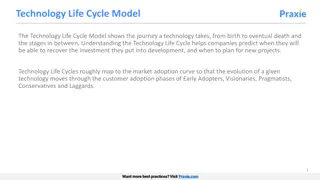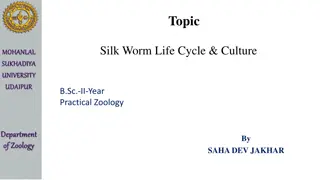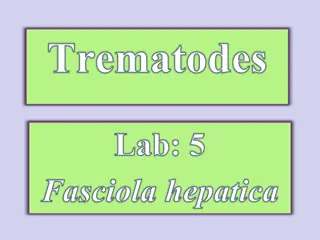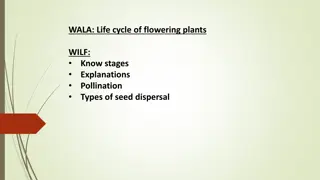Exploring the Fascinating Mosquito Life Cycle
Dive into the intriguing world of mosquitoes through images and informative descriptions discussing their life cycle stages, important vocabulary, and behaviors. Learn about how female mosquitoes lay eggs, where larvae hatch and develop, and how adult mosquitoes thrive in different environments. Explore the captivating process of mosquito reproduction and survival strategies.
Download Presentation

Please find below an Image/Link to download the presentation.
The content on the website is provided AS IS for your information and personal use only. It may not be sold, licensed, or shared on other websites without obtaining consent from the author. Download presentation by click this link. If you encounter any issues during the download, it is possible that the publisher has removed the file from their server.
E N D
Presentation Transcript
GLOBE is a science and education program that connects a network of students, teachers and scientists from around the world to better understand, sustain and improve Earth s environment at local, regional and global scales. To date, more than 130 million measurements have been contributed to the GLOBE database, creating meaningful, standardized, global research-quality data sets that can be used in support of student and professional scientific research. It s easy to get started! You are here!
What do you know about mosquitoes? 2
Important Vocabulary Egg: hatches when exposed to water Larva: (larvae) immature form lives in water We observe the 4th instar. Also known as wigglers. Instar: phase between two periods of molting Pupa: (pupae) does not feed, last immature stage before emerging as an adult, Also known as tumblers. Adult: flying insect 3
Mosquito Life Cycle Adult Female Only female mosquitoes bite and feed on blood of humans and other animals. After her blood meal, female lays eggs on or near the water. The eggs can survive dry conditions for a few months. Oviposit means to lay eggs using an organ at the end of the abdomen Image: CDC, USA 4
Mosquito Life Cycle adult egg The female mosquito lays eggs. The eggs are deposited singly, or attached together to form rafts. Some mosquitoes, like the yellow fever mosquito and the Asian tiger mosquito, prefer to lay their eggs in small containers near humans- like flower pots and water containers. Most eggs hatch into larvae within 24-48 hours after becoming moist but some can also persist for weeks or months through dry periods. Others can withstand subzero winters! 6
Mosquito Life Cycle egg Many mosquitoes lay eggs on the surface of fresh or stagnant water. If they prefer open air, breeding sites they usually choose where the water is sheltered from wind by vegetation. Other mosquitoes prefer a protected habitat, such as a natural container (tree or rock holes) or an artificial container, such as a dish or cup. Eggs can be found in pastures, tree holes, and stream bottoms and hatch when flooded with water. Culex lay eggs in a raft that floats on the surface of the water. Anopheles lay single eggs on the water surface Aedes lay eggs in damp soil or on the sides of containers, and begin to develop when the water level rises and floods the eggs. 7
Mosquito Life Cycle Larva Some mosquito eggs need to be dried completely before they will hatch. The larva hatches from the egg and lives in the water. Most species, such as found in Culex and Aedes genera, have a siphon, or air tube and spend most time on the surface breathing. Anopheles does not have a siphon. Instead, it lays parallel to the surface and breathes through openings on its 8th abdominal segment (spiracles). Some species have specialized siphons and attach to emergent plants found in water, using the plant tissue to access air to breathe. 8
Mosquito Life Cycle Larva Larvae eat constantly They hang on the surface of the water with their mouths open. They have brushes, hairs around their mouth that filter water so only particles small enough to be eaten enter the mouth. They feed on algae, plankton, fungi, bacteria and other organisms. One genera of mosquito is specifically adapted to eat other mosquito larvae! 9
Mosquito Life Cycle Larva During growth, the larva molts (sheds its skin) four times. The stages between molts are called instars. At the 4th instar, the larva can a length of almost 10 mm and toward the end of this instar ceases feeding. 10
Mosquito Life Cycle pupa When the 4th instar larva molts, it becomes a pupa. When identifying mosquito larvae to identify, you are looking for the largest larvae in your sample, the 4th instar. The diagnostic features you are looking for are most pronounced in this stage. 11
Mosquito Life Cycle pupa Mosquito pupae, commonly called "tumblers," live in water from 1 to 4 days, depending upon species and temperature. The pupa is lighter than water and therefore floats at the surface. It takes oxygen through two breathing tubes called "trumpets." The pupa does not eat, but it is not an inactive stage. When disturbed, it dives for safety a jerking, tumbling motion and then floats back to the surface. 12
Mosquito Life Cycle pupa The metamorphosis of the mosquito into an adult is completed within the pupal case. The pupal case is like a factory where the mosquito larva becomes an adult. The adult mosquito splits the pupal case and emerges to the surface of the water where it rests until its body dries and hardens. 13
Mosquito Life Cycle adult Adults emerge, and fly away looking for their first meal and to mate. Adults eat nectar, like many other insects. Females look for a blood meal so they can produce eggs. Not all species of mosquitoes require females to eat a blood meal to make eggs, but those are the mosquitoes you are most familiar with! 14
Acknowledgements The GLOBE Observer Mosquito Habitat Mapper is a NASA-sponsored project that is the result of the combined efforts of an extended team that includes the Institute for Global Environmental Strategies (IGES); NASA Goddard Space Flight Center, Langley Research Center, and Jet Propulsion Laboratory; Space Science Applications, Inc. (SSAI); the GLOBE Implementation Office (GIO), GLOBE DIS and Brooklyn College. The Mosquito Challenge Community Campaign (MCCC) is focused on demonstrating the usefulness of citizen science data collected using the GO Mosquito Habitat Mapper for combating Zika in Brazil and Peru. MCCC is led by IGES in partnership with the University Corporation for Atmospheric Research (UCAR), and leverages the NASA App, and the GLOBE Program networks of scientists, teachers, students, and citizen scientists. The MCCC project is made possible through the generous support of the Combating Zika and Future Threats Grand Challenge through the United States Agency for International Development (USAID). This presentation was prepared by the Institute for Global Environmental Strategies (IGES) and does not necessarily reflect the views of the NASA or USAID. For more information, contact the Principal Investigator, Dr. Russanne Low, at IGES: Rusty_low@strategies.org www.globe.gov 15


